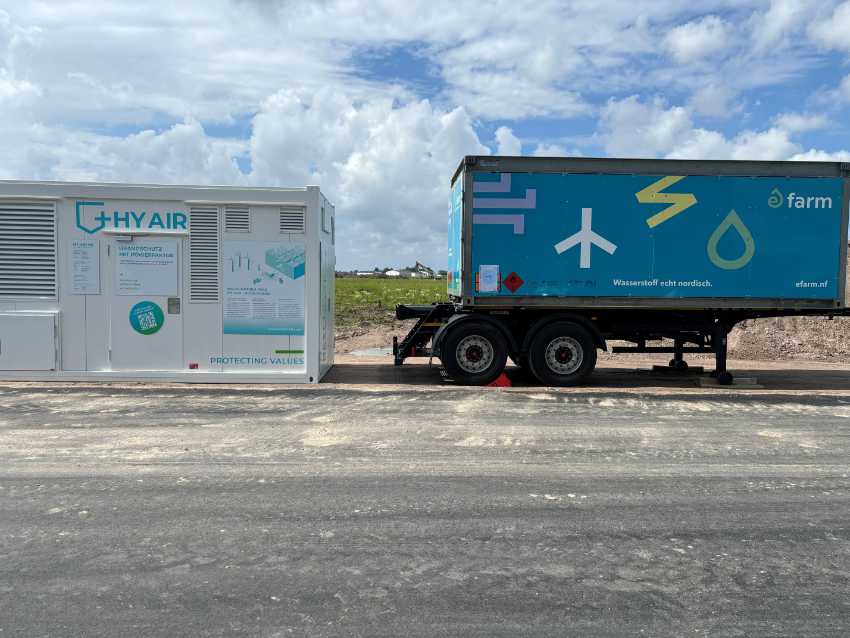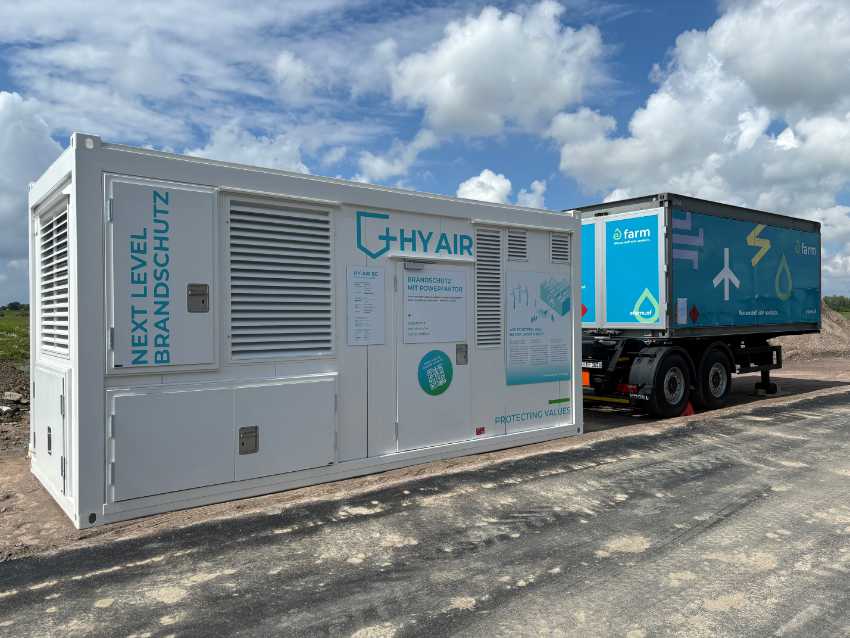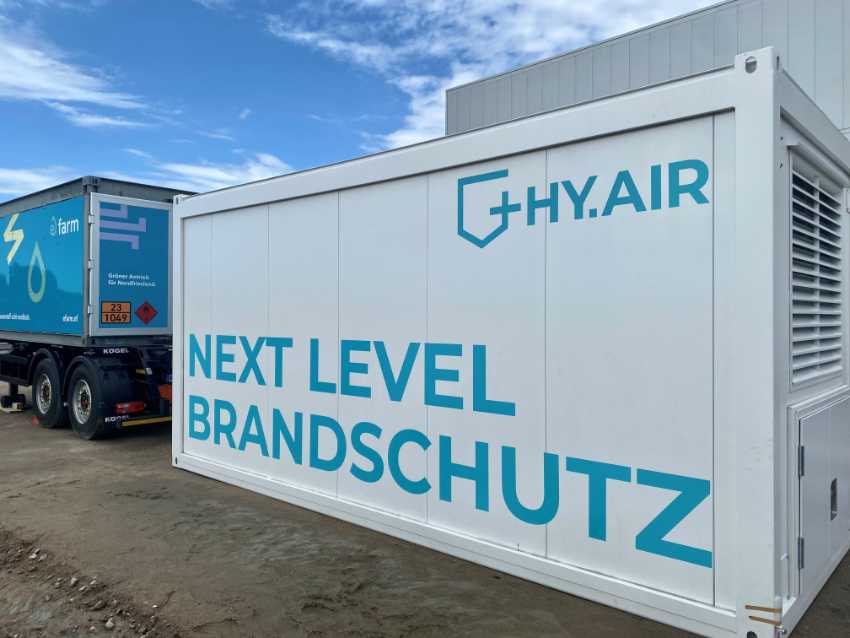As the world’s only preventive fire protection system based on a fuel cell, the HY.AIR 80 uses the low-oxygen exhaust air produced during the energy conversion of hydrogen to reduce the oxygen content in storage rooms – thus not only creating a permanent protective atmosphere, but also generating green electricity and heat at the same time.
From this summer on, HY.AIR Energy will be operating the first HY.AIR 80 fire protection system at the BIO-FROST WESTHOF site in Friedrichsgabekoog, Northern Germany to protect the first CO2-free deep-freeze warehouse, fulfilling the high standards of the WESTHOF BIO Group, which is known for its outstanding sustainability in agriculture.
The project is being realised in collaboration with the fire protection company MINIMAX, which is providing the safety-relevant control and sensor technology for the HY.AIR Energy fuel cell, among other things. The 100% green hydrogen comes from GP JOULE, based around the corner in North Frisia.
The two founders of HY.AIR Energy, Andreas Exler and Lars Frahm, are fuel cell experts. However, the combination of energy generation and fire protection not only excites them technically. They are also motivated by the potential to make an important contribution to climate protection. Instead of expensive diesel generators in the basement, large quantities of extinguishing gas or energy-intensive conventional fire protection systems, HY.AIR technology creates clean added value.
HY.AIR 80 doesn’t let fire breathe
Fire protection through oxygen reduction is not new territory. It is the state of the art especially for deep-freeze warehouses, automated compact storages or high-bay warehouses. However, conventional fire prevention systems are energy-intensive, complex and require additional installations e.g. to maintain fire protection in the event of power failures. They are therefore CO2-intensive and expensive.

In contrast to the conventional systems the HY.AIR 80 generates emission-free electricity and heat from hydrogen while fire-protecting the facility: In the HY.AIR 80 fuel cell, hydrogen and oxygen react to produce electricity and heat. The fuel cell therefore “consumes” oxygen. This is what the patented system utilises – the exhaust air produced is fed into the facility. In this way, the HY.AIR 80 creates a protective atmosphere by reducing the oxygen level, preventing fires from starting in the first place.
In the protected area, sensors constantly monitor the oxygen content, which is individually set according to the goods protection class and is constantly maintained at the required level even in the event of room leaks and door openings. Depending on the oxygen content, accessibility is guaranteed.
The 80 kW units are compactly integrated into 20-foot containers and can be easily connected and installed via “plug & play”. This means that there are no limits to the size of the rooms to be protected and the installation time is reduced to a minimum.
The HY.AIR 80 is energy self-sufficient and can also operate as an emergency power generator as it allows two different operating modes – grid parallel and island mode. Thanks to multiple utilisation, the combined efficiency is over 90 %, which makes it the world’s most efficient stationary fuel cell system. This not only reduces operating costs, but also protects the environment.
In order to maximise the potential of hydrogen production, HY.AIR also supports the purchase of green hydrogen, i.e. hydrogen produced from renewable wind and solar power.

Market perspective
The increasing degree of automation, ever denser storage forms, such as the compact container warehouse, growing concentrations of value and protection goals that focus not only on personal and building protection, but also on protection against operational downtime and maintaining supply capability have already led to an enhanced demand for oxygen-reduced fire protection systems in recent years. With the ramp-up of the global hydrogen economy and Germany’s pioneering role, not only is the availability of green hydrogen certain, but costs are also expected to fall in the coming years. Accordingly, HY.AIR Energy is preparing for high and growing demand on different continents in the short term.

Key facts HY.AIR 80
- Up to 80 kW electrical output power per unit
- grid parallel or island operation (emergency power)
- Up to 100 kW thermal output power
- > 90% efficiency in energy conversion
- > 100,000 m3 volume fire protection possible
- “Plug’n’Play” 20” container, modularly expandable
Autor: Sybille Riepe, Head of Communication

